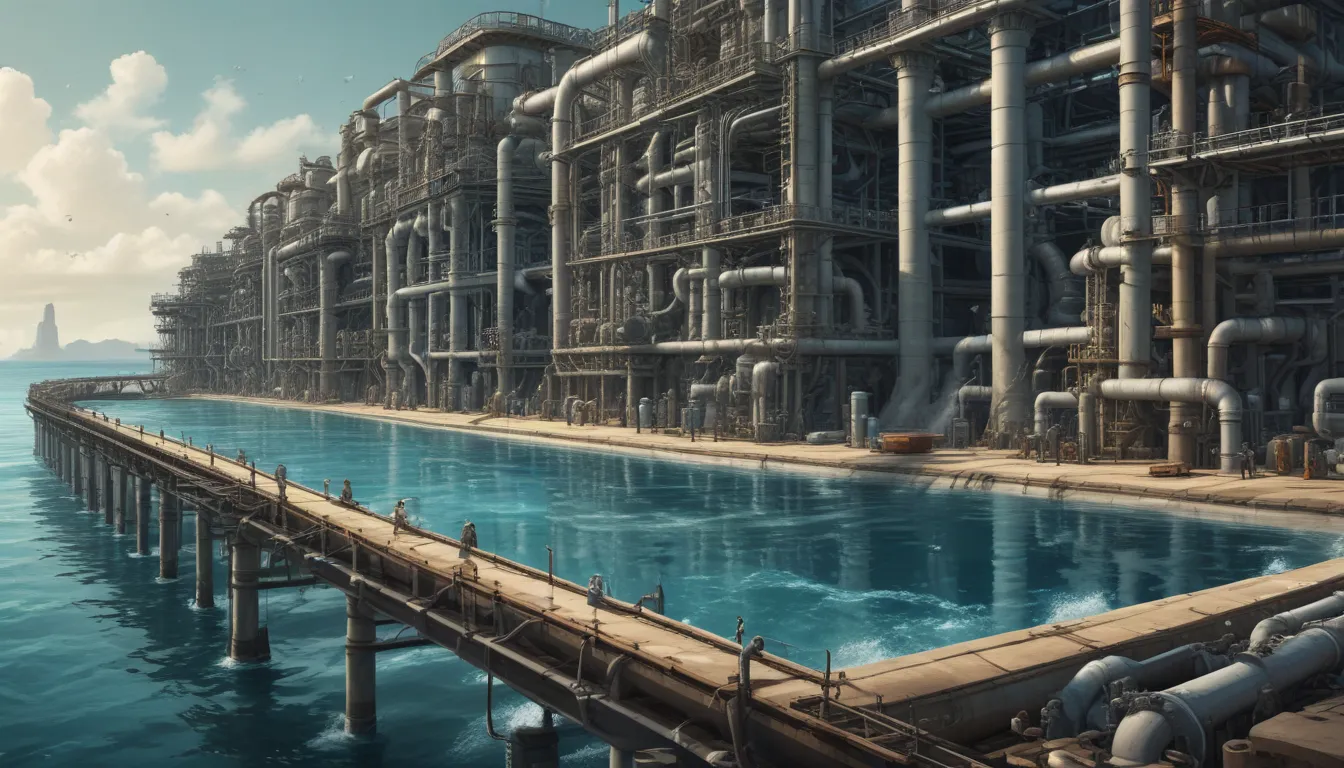A Note About Images: The images used in our articles are for illustration purposes only and may not exactly match the content. They are meant to engage readers, but the text should be relied upon for accurate information.
As the world grapples with increasing water scarcity issues due to a growing population and limited freshwater resources, desalination has emerged as a crucial process in addressing these challenges. This innovative technique involves the removal of salt and impurities from seawater, making it safe for consumption and various industrial purposes. In this article, we will delve into the captivating world of desalination and uncover 15 intriguing facts about this remarkable process.
Key Takeaways:
- Desalination provides a vital source of fresh water for growing populations and arid regions, but it requires a lot of energy and can impact marine ecosystems.
- By using ancient techniques and evolving technology, desalination helps diversify water sources and enhance water security, offering a sustainable solution to global water challenges.
Delving into the World of Desalination
Desalination technology has ancient roots, with civilizations like the Egyptians and Greeks using rudimentary methods to desalinate water. Today, desalination is becoming a vital source of freshwater, especially in regions with limited freshwater resources. Countries in the Middle East lead in desalination capacity, with Saudi Arabia, UAE, and Kuwait having the highest desalination capacity due to their arid climate and scarcity of freshwater sources.
The Process of Desalination
Desalination is an energy-intensive process that primarily relies on electricity. The most common method used is reverse osmosis, which involves using semipermeable membranes to remove salt and impurities from seawater. However, desalination plants produce brine as a byproduct, which is a highly concentrated saltwater solution that is discharged back into the sea, posing potential environmental risks.
Environmental Impact and Quality Standards
The discharge of brine into the ocean can have ecological implications, affecting marine ecosystems and biodiversity in the vicinity. Despite these challenges, desalinated water meets stringent quality standards after undergoing rigorous treatment processes, ensuring that it is safe for consumption.
Advantages and Applications of Desalination
Desalination can alleviate water scarcity in coastal regions, providing a sustainable source of potable water. It can also be utilized for agricultural purposes, supporting irrigation in arid regions and enhancing food security. Integrating desalination plants with renewable energy sources like solar or wind power can help reduce the carbon footprint associated with the process.
Challenges and Future Trends in Desalination
Desalination plants face challenges in water sourcing, requiring a reliable and consistent source of seawater or brackish water for operation. Despite these challenges, ongoing research and development efforts are focused on improving desalination technologies to make them more energy-efficient and cost-effective. Desalination technology continues to evolve, paving the way for more sustainable and efficient methods in the future.
Conclusion
Desalination technology has transformed the way we address water scarcity issues, offering a sustainable solution to ensure access to clean, fresh water for generations to come. While desalination comes with its challenges, its potential to alleviate water scarcity and enhance water security cannot be ignored. As countries invest in innovative technologies and policies, desalination has the potential to become an even more vital part of our water supply infrastructure, ensuring a sustainable water future.
FAQs
Q: What is desalination?
A: Desalination is the process of removing salt and impurities from seawater, making it suitable for human consumption and other uses.
Q: Why is desalination important?
A: Desalination is important because it provides a solution to water scarcity, especially in regions with limited freshwater resources.
Q: How does desalination work?
A: Desalination typically involves one of two processes: reverse osmosis or distillation. Reverse osmosis uses a membrane to separate salt and impurities from water, while distillation involves heating seawater to produce steam and then condensing the steam to obtain freshwater.
Q: Where is desalination commonly used?
A: Desalination is commonly used in arid regions, coastal areas, and islands where freshwater is scarce.
Q: What are the environmental impacts of desalination?
A: Desalination plants consume a significant amount of energy and can have negative effects on marine ecosystems due to the discharge of highly concentrated brine into the ocean.
Q: Is desalinated water safe to drink?
A: Yes, desalinated water is safe to drink as it goes through a rigorous treatment process that removes all impurities, including salt.
Q: Is desalination a sustainable solution?
A: While desalination provides a solution to water scarcity, its sustainability depends on using renewable energy sources, implementing efficient technologies, and managing the environmental impacts effectively.
Q: How expensive is desalinated water?
A: Desalinated water is generally more expensive compared to traditional freshwater sources. The cost varies depending on factors such as energy prices, plant location, and infrastructure.
Q: Can desalination be used for agriculture?
A: Yes, desalinated water can be used for agriculture, helping to sustain crops in regions with limited freshwater resources.
Q: Are there any alternatives to desalination?
A: Yes, alternatives to desalination include water conservation measures, wastewater recycling, and rainwater harvesting, among others.
Our commitment to delivering trustworthy and engaging content is paramount. Each fact on our site is contributed by real users like you, bringing a wealth of diverse insights and information. Trust in our dedication to quality and authenticity as you explore and learn with us.






